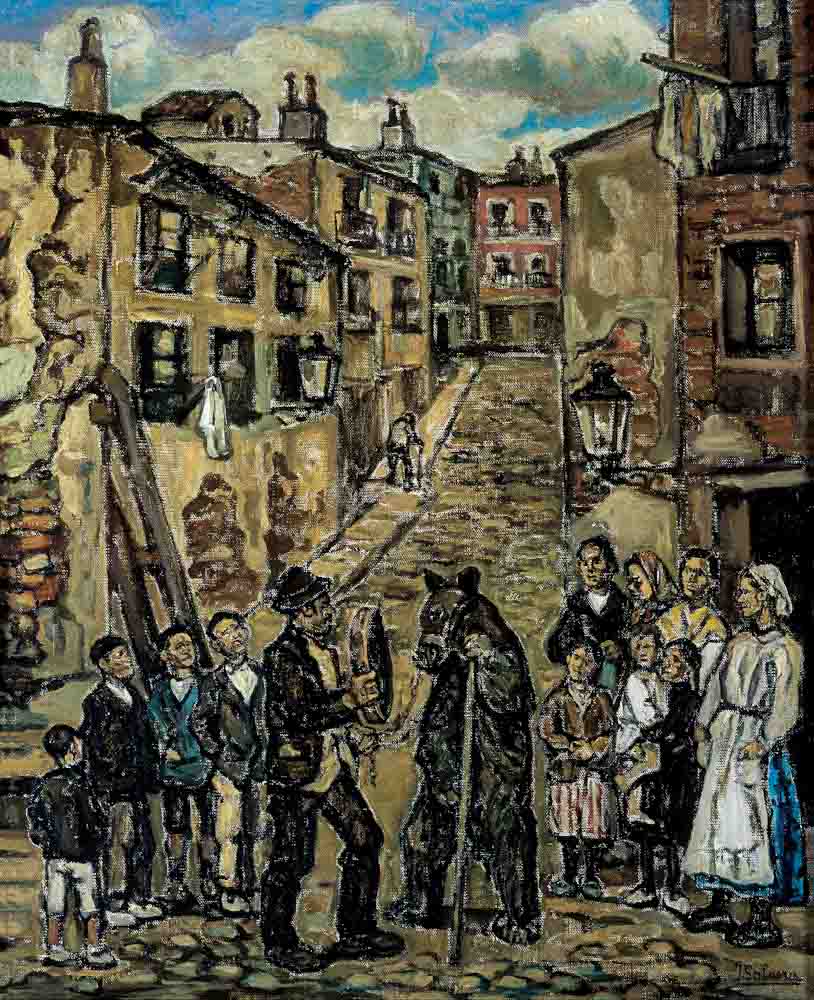
José Gutiérrez Solana (Madrid, 1886-1945)
The Hungarians
hacia 1922-1923
WORK INFORMATION
Oil on canvas, 90 x 70 cm
OTHER INFORMATION
Signed at the lower right corner “J. Solana”
In his writings Solana left a detailed account of the demolition work that took place in the centre of Madrid between 1917 and 1922 in order to construct the second section of the Gran Vía. These observations were undoubtedly based on his strolls around the city.
In Madrid callejero, published in 1923, the artist described the picturesque world that surrounded this architectural project and which would spring up on empty plots of land in the city centre at the end of the working day. Here the passer-by could see a wide variety of acts from puppeteers to fortune tellers and Hungarians, to whom Solana devotes a whole chapter of his book: “The Hungarians with monkeys and bears were the ones who made the most money and who worked more on the empty plots of land where the sellers of peanuts, acorns, oranges and deep fried slices of potato used to install their little carts […] one of the Hungarians played the drum and another the cornet […]. One also sees them with a large tambourine and a heavy stick under their arm and a bad-tempered bear wearing a muzzle. When they beat the drum the performance starts.”
This canvas offers a detailed recreation of this passage, taking as its setting the houses and streets of old Madrid that were about to be pulled down. In the centre is a Hungarian bear handler with his animal, surrounded by local people who are grouped together and arranged as if they were figures in an altarpiece.
This is a real scene from the Madrid of Solana’s day and one that shows the typical pastimes, clothing and atmosphere of these old streets. It depicts a fiesta but the sombre tonality of blacks and ochres gives it a muted atmosphere that is typical of the artist, as is the coarseness of the line.
María José Salazar
